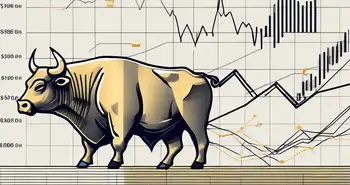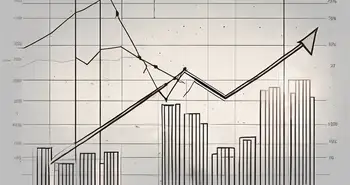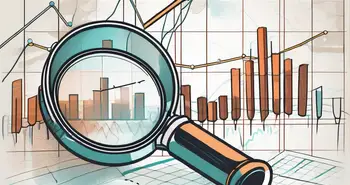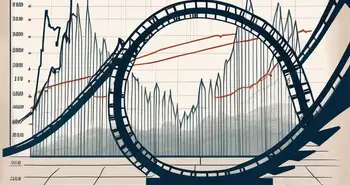The Impact of Black Monday on the Stock Market
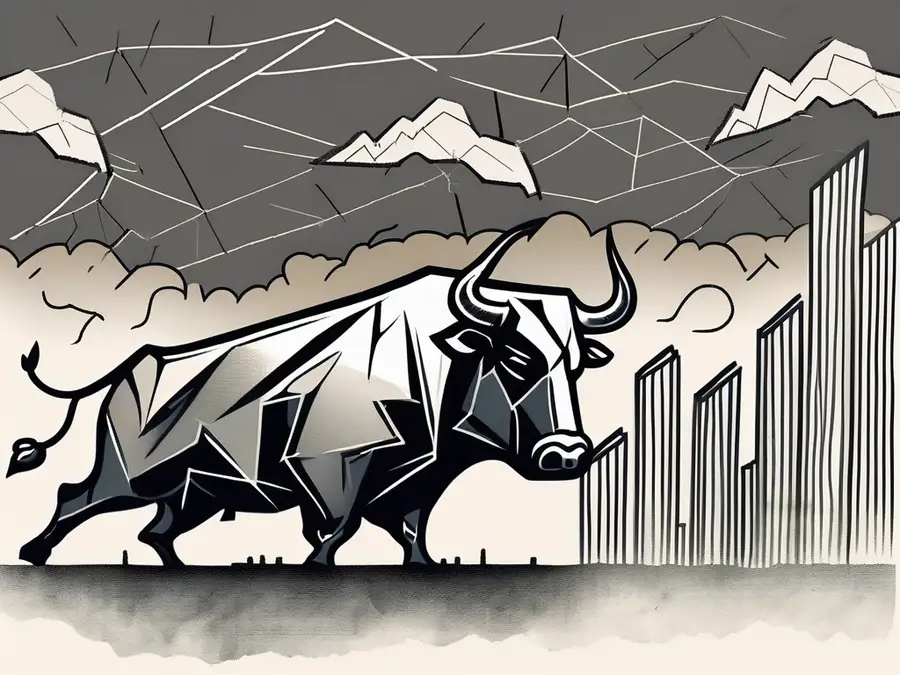
Black Monday, the infamous stock market crash on October 19, 1987, forever changed the financial landscape. As an expert in the field, I have closely studied the events surrounding this historic day and its profound impact on the stock market. Join me as we delve into the details, examining the causes, consequences, and lasting effects of Black Monday.
Understanding Black Monday: A Historical Overview
Before we can fully comprehend the impact of Black Monday, it is crucial to understand the historical context in which it occurred. The 1980s were marked by a series of economic booms and busts, regulatory changes, and emerging technological advancements in the financial sector. These factors, combined with global events, set the stage for the fateful Monday in October.
The Events Leading Up to Black Monday
In the years preceding the crash, stock markets experienced a period of rapid growth, fueled by excessive speculation and leverage in the marketplace. As prices soared to unprecedented levels, concerns began to emerge about the sustainability of this bull market.
Large institutional investors, such as mutual funds and pension funds, were heavily invested in equities, exposing the financial system to significant risks. Additionally, the rise of program trading, which utilized computer algorithms to execute trades, added a new layer of complexity to the market dynamics.
The Day of the Crash: A Timeline
Black Monday began as a seemingly ordinary trading day, with optimism abound. However, as the morning progressed, stocks started plummeting at an alarming rate. Panicked investors rushed to sell their holdings, leading to a cascade of selling orders.
By the end of the day, the Dow Jones Industrial Average had plummeted a staggering 22.6%, erasing billions of dollars in market value. This unprecedented decline sent shockwaves throughout the financial world and left many to grapple with the aftermath.
The Immediate Aftermath of Black Monday
The repercussions of Black Monday reverberated across global stock markets. Investors around the world were shaken by the sudden and severe decline. Governments and regulatory bodies scrambled to restore confidence in the financial system and prevent a full-blown crisis.
Reaction of the Global Stock Markets
Black Monday triggered a domino effect, with stock markets around the world witnessing steep declines in the subsequent days. From Tokyo to London, fear and panic gripped investors as they tried to make sense of the chaos. The crash revealed the interconnectedness of global markets and the speed at which information and fear could spread.
Government and Regulatory Response
Understanding the gravity of the situation, governments and regulatory bodies swiftly implemented measures to stabilize the markets. Central banks injected liquidity into the financial system, easing the strain on banks and encouraging lending. Regulators also introduced circuit breakers and other mechanisms to prevent future market meltdowns.
These unprecedented actions helped restore some confidence in the markets and prevent a prolonged crisis. However, the crash highlighted the need for ongoing vigilance and regulatory oversight to ensure the stability and integrity of financial systems.
Long-Term Effects on the Stock Market
Black Monday left an indelible mark on the stock market, prompting significant changes in trading practices, regulations, and investor behavior. These long-term effects continue to shape the financial landscape to this day.
Changes in Trading Practices and Regulations
Black Monday exposed the vulnerabilities of an increasingly interconnected and technology-driven financial system. Regulators and market participants recognized the need for stricter oversight and risk management practices.
In response, trading practices were revamped, with increased emphasis on risk controls and circuit breakers to prevent excessive volatility. Margin requirements were also tightened to curb excessive speculation.
Impact on Investor Behavior and Market Confidence
The crash served as a wake-up call for investors, highlighting the importance of proper risk assessment and diversification. It underscored the fact that markets can swiftly turn against even the most seasoned investors.
Market confidence took a hit, and a sense of caution permeated the investor community. However, over time, as the markets recovered and regulations tightened, confidence gradually returned, albeit with a newfound sense of skepticism.
Comparing Black Monday to Other Market Crashes
While Black Monday stands out as one of the most significant stock market crashes in history, it is not an isolated event. By examining other market crashes, we can gain valuable insights and discern patterns that help us better understand these tumultuous episodes.
Similarities and Differences in Causes and Effects
Market crashes are often triggered by a combination of factors, including economic imbalances, speculative bubbles, and unforeseen events. However, each crash has unique elements that distinguish it from others.
In the case of Black Monday, the crash was predominantly driven by a sharp increase in selling pressure, exacerbated by program trading. This stands in contrast to other crashes, such as the Great Depression, which had different underlying causes and systemic issues.
Lessons Learned from Black Monday
Black Monday served as a harsh lesson for market participants, regulators, and policymakers. It underscored the need for constant vigilance, risk management, and the importance of adapting to a rapidly evolving financial landscape.
While subsequent crashes have occurred, lessons from Black Monday have informed responses and measures to mitigate their impact. The crash was a watershed moment that prompted introspection and a commitment to making the financial system more resilient.
The Role of Technology in Black Monday
Technology played a crucial role in the events leading up to and during Black Monday. The advent of computer trading systems brought new opportunities and challenges for the financial industry.
The Influence of Computer Trading
Black Monday marked one of the first instances where computerized trading systems significantly impacted market dynamics. These systems, designed to execute trades based on pre-defined algorithms, exacerbated the selling pressure during the crash.
While program trading has evolved and become more sophisticated since Black Monday, its impact on market volatility remains a topic of debate. Regulators and market participants continue to grapple with finding the right balance between innovation and stability.
Technological Advancements Since Black Monday
Since the crash, technology has continued to transform the financial industry. Electronic trading platforms, high-frequency trading, and algorithmic trading have become prevalent, altering the way markets operate.
These advancements have brought about greater efficiency and access to markets, but also raised concerns about market manipulation and systemic risks. Regulators have adapted to these changes, implementing measures to address emerging challenges in the digital era.
As an expert in financial markets, I have witnessed the long-lasting impact of Black Monday firsthand. This event serves as a poignant reminder of the fragility of the financial system and the importance of sound risk management practices. It has shaped my approach to investing and reinforced the need for diligent research, diversification, and a long-term perspective. By learning from history, we can navigate the ever-evolving landscape of the stock market with greater confidence and resilience.
FAQ
What was the main cause of Black Monday?
The main cause of Black Monday was a combination of excessive speculation, inflated stock prices, and the rise of computerized program trading. These factors created a perfect storm that led to a rapid and severe decline in stock markets.
How did governments and regulators respond to Black Monday?
In the aftermath of Black Monday, governments and regulators took swift action to restore confidence in the financial system. They injected liquidity into the markets, implemented circuit breakers to halt excessive volatility, and introduced stricter regulations to prevent future crashes.
What lessons can be learned from Black Monday?
Black Monday taught us the importance of risk management, diversification, and the need for ongoing regulatory oversight. It highlighted the risks associated with excessive speculation and the potential impact of technological advancements on market dynamics.
How has technology evolved since Black Monday?
Since Black Monday, technology has revolutionized the financial industry. Electronic trading platforms, algorithmic trading, and high-frequency trading have become prevalent. These advancements have brought both benefits and challenges, prompting regulators to adapt and address emerging risks.
Stay informed, stay vigilant, and remember the lessons of Black Monday. History has a way of repeating itself, but with the right approach, we can navigate the uncertainties of the stock market with confidence and resilience.
As we reflect on the lessons of Black Monday and the importance of adapting to the ever-changing financial landscape, consider taking your trading to the next level with Morpher. Embrace the future of investing on a platform that offers zero fees, infinite liquidity, and the flexibility of fractional investing. With Morpher, you can confidently trade across a multitude of asset classes, leveraging blockchain technology for a safer, more controlled, and innovative trading experience. Sign Up and Get Your Free Sign Up Bonus today, and join a community of investors who are reshaping the world of trading.

Disclaimer: All investments involve risk, and the past performance of a security, industry, sector, market, financial product, trading strategy, or individual’s trading does not guarantee future results or returns. Investors are fully responsible for any investment decisions they make. Such decisions should be based solely on an evaluation of their financial circumstances, investment objectives, risk tolerance, and liquidity needs. This post does not constitute investment advice.

Painless trading for everyone
Hundreds of markets all in one place - Apple, Bitcoin, Gold, Watches, NFTs, Sneakers and so much more.

Painless trading for everyone
Hundreds of markets all in one place - Apple, Bitcoin, Gold, Watches, NFTs, Sneakers and so much more.


